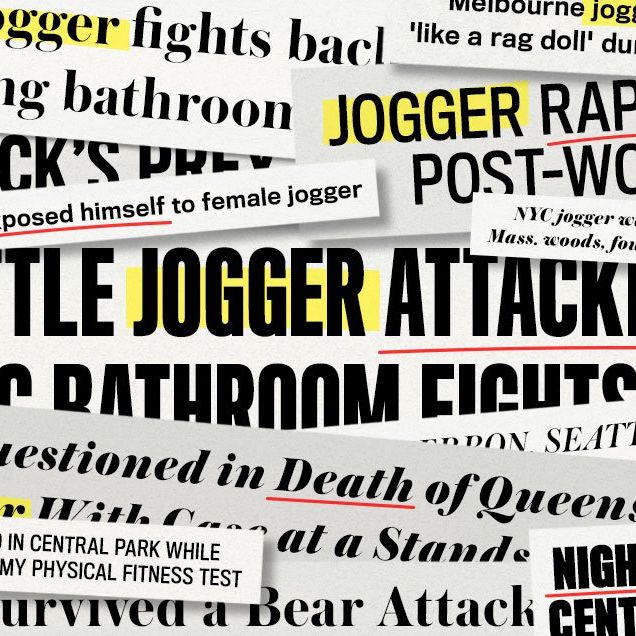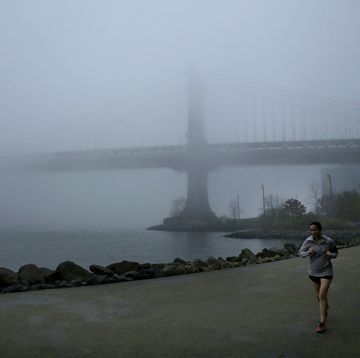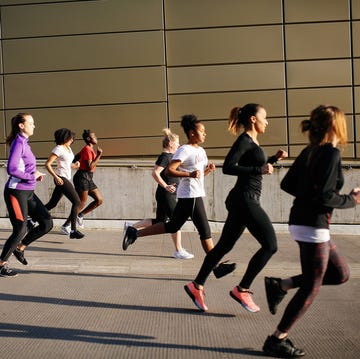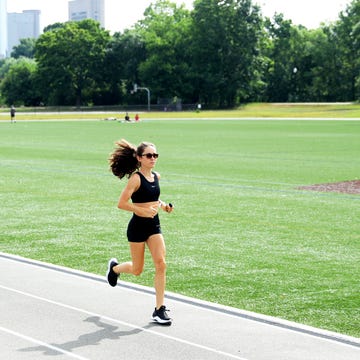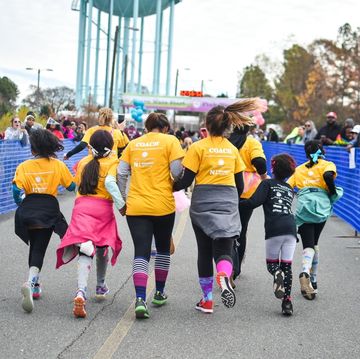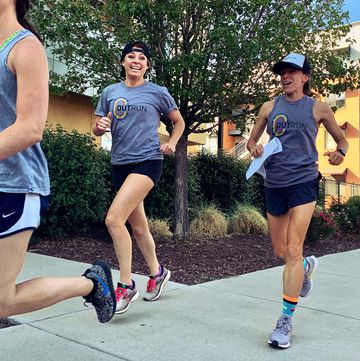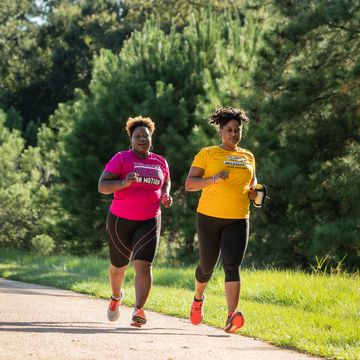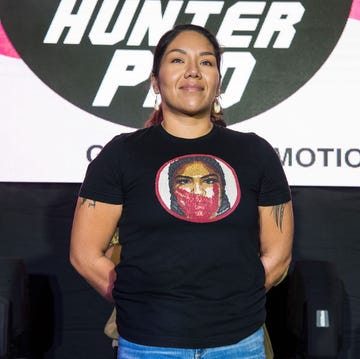Earlier this month, Kelly Herron set off on a long run through her hometown of Seattle, training for her first marathon. A bathroom stop four miles in turned into a fierce show of self defense, as she was violently attacked by a registered sex offender.
Herron posted a now viral Instagram of the incident, including the hashtags #runnersafety and #instarunners. News media organizations around the world shared—and headlined—her post: Seattle Jogger Attacked in Public Bathroom Fights Back; Seattle jogger fights back after terrifying bathroom assault; Kelly Herron, Seattle Jogger, Fights Off Attack and Attempted Rape in Public Washroom. Her own language ignored, Herron became the “Seattle Jogger.”
As Herron later told me, “Even if I look like a wounded animal, loping through the woods, as long as my knees are bent and I'm putting one foot in front of the other then I'm running.” “Running” defines a motion. “Jogging” implies a speed—a leisurely one, devoid of intensity.
Last summer, three women were murdered in the United States while running over the course of just nine days. The media covered these attacks—possible links, possible trends—in great depth, continually propelling a historical, outdated, and deflating descriptor: “jogger.” Semantics seem to have no place in discussions of assault, rape, and murder. But the title "jogger” has no place in discussions of runners.
In the headlines, press quickly deemed Karina Vetrano, murdered while running through Howard Beach, New York, the “Queens Jogger.” The nickname persists as a case now develops around her alleged assailant, inviting a chilling parallel with a case few female runners have been able to forget: the rape and attempted murder of “The Central Park Jogger”—one of the most infamous crimes of the 1980s.
RELATED: Special Report: Running While Female
“The Central Park Jogger” was once a convenient, protective media nickname for Trisha Meili, until she confirmed her identity in April of 2003. I knew her story long before I’d moved to New York, before I’d also rented an apartment in Yorkville, long before Central Park became the training ground where I’d log miles each day.
I can’t stop my mind from drifting towards her with a morbid fascination each time I run through the 102nd Street Traverse and the morning or evening feels just a little too quiet or a little too dark, the intervals between encountering other runners just a little too long to be comfortable. Meili was a young professional woman, my age, who felt at home in the park, and craved how this routine let her unwind from the work day. I feel the same. Do not ever call me a jogger.
To “run”—“to go steadily by springing steps so that both feet leave the ground for an instant in each step”—likely owes its origin back to the Latin word for stream, “rivus,” and has described human movement for centuries. To “jog”—“to go at a slow, leisurely, or monotonous pace”—first described the gait of a horse, then the slow, steady pace of a human in the mid-twentieth century.
I can accept that just a few decades ago, in Meili’s time, “jogger” may have connoted a mere enthusiast of recreation, while “runner” may hold an unwanted seriousness. I can picture these early female joggers, embracing this moniker and this newly acceptable aerobic activity in their high-waisted short shorts, their ponytails secured atop their heads with bright scrunchies.
RELATED: Why Do People Still Use the Dreaded J-Word?
Not anymore. In 1990, women represented only 25% of road race finishers in the United States. This figure exploded to 57% by 2015. These women are undeniable athletes, now representing 61% of all half-marathon finishers and 44% of all marathon finishers nationwide.
Communities have the power to define the vocabulary by which they’ll be referred. The label “runner” is now embraced—in the hashtags used by Herron, who told me she felt a strong response from runners to news outlets’ “offensive” use of the term “jogger”—and beyond.
Would male victims be treated similarly, their integrity as athletes sacrificed for the sake of an editor seeking diverse diction in a short article? Herron, doubted so, stating, “If I was a man I would have been called a runner.” I was curious.
Examining the coverage of what makes the news as men and women go about their training will convert the most fervent trail enthusiast or road warrior into a treadmill recluse. Women have been flashed, followed, raped, murdered, and mauled with machetes. Both sexes have suffered animal attacks—by alligators, kangaroos, and grizzly bears—and the swerves of errant drivers. Men too, have faced physical altercations—muggings and assaults.
It’s difficult to draw conclusions from these headlines, because the incidents that befall males tend to be small town news: freak accidents resulting from unfortunate circumstances or random acts of violence, not events indicative of a larger culture of sexual assault, igniting broad discussion.
RELATED: Runner Speaks Out on Women's Inequality in Sport
One thing does become apparent: any organization indiscriminate enough to use the term “jogger” to describe a female runner is likely to have also used “runner” in the same article, and if they’ve picked up an incident concerning a male runner, they’ll have called him both a “jogger” and a “runner” just as haphazardly. But, this use has varied implications across genders, given the context of the crimes committed against them.
If a male “jogger” is run down by a car, does the term cause the reader to trivialize his athleticism—to question if a finer athlete might’ve outrun the car? No. If a female “jogger” is yanked off a trail and raped, has the word “jogger” made a statement, implying a gentle, slow pace, a less-serious athlete—a target for attack?
Perhaps. Speed and strength are irrelevant to the crime—the athletic equivalent to a report of campus rape that mentions the victim’s outfit or alcohol consumption. It is not important how fast any of these women were running. It is important that the default language used to discuss these attacks suggests that it was slowly; that when learning of a moment in which a woman’s strength was called upon to defend her very life, we read a word that undermines it.
The least we can do in the aftershock of these events is give due credit to these women who, when assaulted, were increasing their physical strength and stamina in a culture that still, in its darkest moments, tests these limits.
In the months following last summer’s trio of deadly attacks, my roommate and I would file a flight plan with each other and set a cut-off time for our safe return before leaving on each run of our training for the New York City Marathon. Our unspoken understanding: if the cut-off time isn’t met, send help. Violent attacks on women while running—nearly three decades after the Central Park Jogger—prove the ultimate hurdle females face when pursuing athletics: personal safety. Language should not be another.
* * *
Born and raised in Anchorage, Alaska, Maia now runs and writes in New York, New York. She recently completed her seventh marathon.
